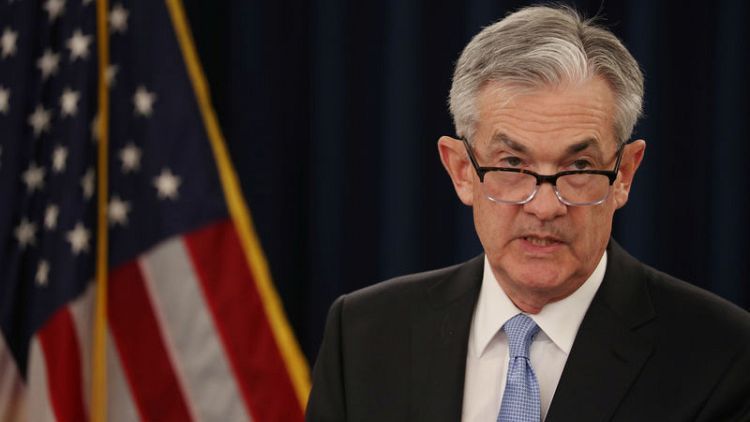By Howard Schneider and Trevor Hunnicutt
WASHINGTON (Reuters) - The Federal Reserve took a sharply less aggressive policy posture on Wednesday, signalling it will not hike interest rates this year amid a slowing economy and announcing a plan to end its balance sheet reduction program by September.
The U.S. central bank reiterated its pledge to be "patient" on monetary policy, and said it would start slowing the reduction of its holdings of Treasury bonds in May, lowering its monthly cap to $15 billion from $30 billion.
All told, the combined announcements mean that, after tightening monetary policy with two levers at once over the past year, the Fed is now pausing on both fronts to adjust to weaker global growth and a somewhat weaker outlook for the U.S. economy.
"It may be some time before the outlook for jobs and inflation calls clearly for a change in policy ," Fed Chairman Jerome Powell said in a press conference following the end of a two-day policy meeting. "'Patient' means that we see no need to rush to judgment."
Updated economic forecasts released at the end of the meeting also showed policymakers had abandoned projections for any rate increases this year, and see just one rate hike next year.
After the announcement, fed funds futures contracts began pricing in a better-than-even chance of a rate cut by next year.
Powell pushed back on that view, saying the U.S. economy is in a "good place" and that the outlook is "positive."
Still, he said, there are ongoing risks, including those related to Britain's exit from the European Union, U.S. trade talks with China, and even the outlook for the U.S. economy, which he said the Fed is watching closely.
"The data are not currently sending a signal that we need to move in one direction or another, in my view," he said. "It's a great time for us to be patient."
Benchmark U.S. stock market indexes swung higher after the Fed's statement was released, and key Treasury security yields dropped to the lowest since early January. The dollar weakened broadly against major trading partners' currencies.
"The Fed exceeded markets' dovish expectations, which took a toll on the greenback," said Joe Manimbo, senior market analyst at Western Union Business Solutions in Washington. "The Fed did a big about-face on policy. The fact that the Fed threw in the towel on a 2019 rate hike was particularly dovish."
The new economic projections released on Wednesday showed weakening on all fronts compared to the forecasts from December, with unemployment expected to be slightly higher this year, inflation edging down, and economic growth lower as well.
"Growth of economic activity has slowed from its solid rate in the fourth quarter," the Fed said in a policy statement that kept its benchmark overnight lending rate, or federal funds rate, in a range of 2.25 percent to 2.50 percent.
"Recent indicators point to slower growth of household spending and business fixed investment in the first quarter ... overall inflation has declined."
Nonetheless, the Fed's rate-setting committee said it viewed "sustained" growth as the most likely outcome.
The Fed said it would end its balance sheet runoff in September, earlier than many analysts had expected, provided the economy and money market conditions evolved as expected.
Redemptions of mortgage-backed securities would at that point be reinvested in Treasuries up to as much as $20 billion per month, moving the Fed generally towards a Treasuries-only approach to its assets.
Graphic: Federal Reserve bond holdings since the financial crisis (https://tmsnrt.rs/2HDf8BV)
DOWNGRADE ALIGNS WITH MARKETS
Fed policymakers project gross domestic product growth to slow to 2.1 percent this year from the previous forecast of 2.3 percent, while the unemployment rate is forecast at 3.7 percent, slightly higher than the December projection.
Inflation for the year is now seen at 1.8 percent, compared to the Fed's forecast in December of 1.9 percent.
The new projections amounted to a wholesale downgrade of the Fed's outlook, with at least nine of its 17 policymakers lowering their expected rate path and collectively shaving a full half of a percentage point off the expected fed funds rate at the end of this year.
As it stands, the Fed, which raised rates seven times over the 2017-2018 period, is approaching a stopping point of 2.6 percent for its fed funds rate, which would leave it well below historic norms. The projections show the Fed no longer expects to need to make policy restrictive to guard against inflation
The Fed's policy statement was unanimous.
(Reporting by Howard Schneider and Trevor Hunnicutt; with writing by Ann Saphir; Editing by Paul Simao and Dan Burns)



